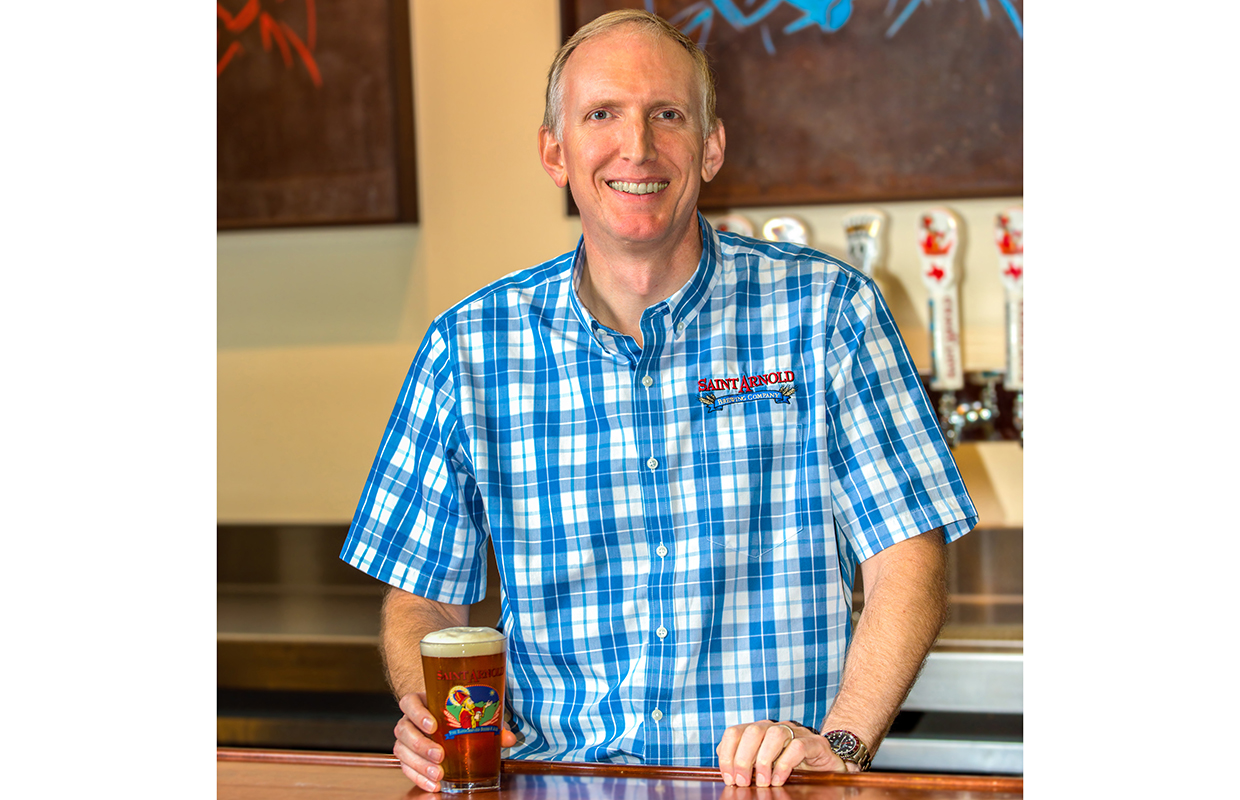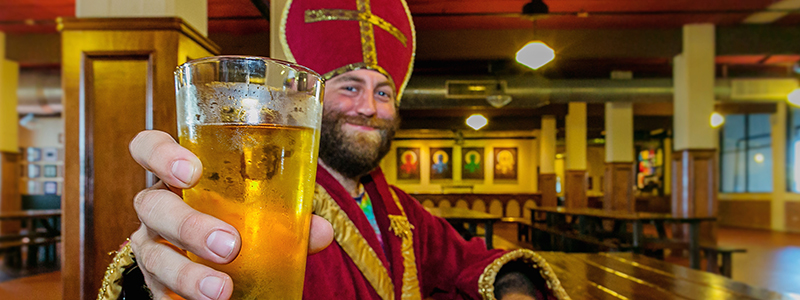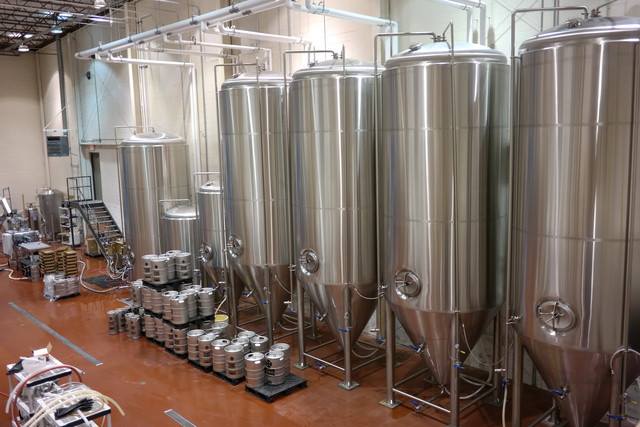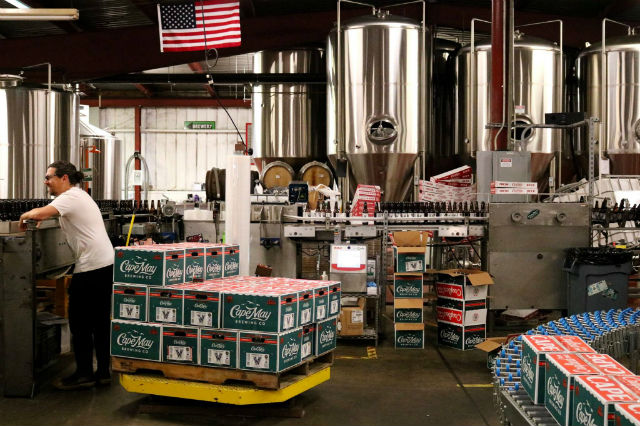
Brock Wagner smiles and laughs. He will gladly admit he is the world’s worst salesman.
“I know nothing about sales. It’s not a strength. I don’t particularly enjoy it,” he said.
The co-founder and owner of veteran Texas brewery, Saint Arnold, knew his weakness when he opened and said he still doesn’t like to “sell” his brand even after more than 26 years of business. He’d rather talk numbers and quality. That’s what drives the Houston-based brewery.
“To this day, I can still build a financial model in my sleep,” he said with a laugh. “I like to tell people that there’s only one reason that companies go bankrupt or close. It’s that they run out of money.
“Now, the reasons that they run out of money differ. But if you can plan well, and have the ability to do financial modeling, you can see what different choices — and what different paths — it will lead to. You can figure out ahead of time if a certain path is going to cause you to run out of money and you can avoid that pitfall.”
So Wagner, who came from an investment banking background, was a homebrewer that had an eye for numbers and he looked for the rest of the pieces to create Saint Arnold in what was a fairly vacant craft beer landscape in Texas in the early 90s.
“I think having a finance background is helpful,” he said even about being a brewery owner today. “It’s critical for anybody in business to understand the financial side of it.
“It’s not sexy, and it’s not fun. It’s not what I like to do. But it certainly helped
“Today, I still see some people for whom it’s a passion. But I also see, in the last decade, a lot of people that have opened breweries because they think it’s a business they can make money at. They like beer. But it isn’t necessarily the passion. And I think that shows in some of the businesses.”
As for sales, of course, it’s important and Wagner knew well enough to leave it alone and let others do it for him. Even at the start, Wagner made the beer and fellow co-founder Kevin Bartol sold it.
“We’ve always had good salespeople because I knew that I wasn’t good at it,” he said. “We brought in a sales manager a few years ago, who I think has really helped our team a lot. He came with some background of beer sales experience and has been able to really teach the team and help them. That’s certainly been positive.”
Although reaching nearly 70,000 barrels of production, Wagner — who joked that the brewery’s management structure is that he has a board of directors … and that board is one person, himself — they attempt to have as horizontal of a team as Saint Arnold possibly can.
“It was one thing when we had 11 people at the company, I had 10 direct reports,” he said. “Now — on the brewery side — we have about 80 people. Obviously, having 79 direct reports would be a cluster. We really try, as the company grows, to hire people who can handle the complexity of the company, as opposed to creating more structure and limiting people’s roles.
“I would say that today I don’t have to come into work and everything runs perfectly well. In fact, a lot of the team would probably prefer that I just stay home and just let them run the show.”
The Houston brewery has grown behind a solid core of people. Most, Wagner said, is a team that has been in place for about 10 years.
“They really help me make me look good,” Wagner admitted. “A company is nothing but people. So the better people you hire, the better your company’s going to be. That’s probably the thing that I’m most proud of with Saint Arnold is the people that I work with.”
It’s true on the business side and in production.
“I’ve never been a believer in any sort of assistant brewers,” he said, explaining that the brew team doesn’t break down into cellermen, assistant brewers, head brewers, and such.
“I feel like cleaning the tank is every bit as critical as brewing and filtering,” Wagner said. “So why would you have somebody who you didn’t feel comfortable with brewing, cleaning your tank? So everybody does everything. It’s a relatively horizontal team, which is still something I really try to promote also.”
Clearly, there is more structure today than there was 26 years ago.
It was probably about three years in that Wagner — who opened Saint Arnold in 1994 and was the only member of the brewing team — had somebody else who was helping with the brewing. Then five years in, he bought out Bartol and most of the other investors.
“At that point I kind of was wearing all the hats,” he said. “Since then I have not been the person turning the valves. If I tried to operate the system today … I still know, technically, how to do it. But in practice, it wouldn’t be pretty.
“You keep hiring better and better people. I have an amazing team that I work with. Frankly, I think they do a better job than I ever did at brewing the beer. I still work hard to really impart the importance of quality. All the beer recipes … we have a pretty exhaustive process for developing a recipe and I’m a huge part of that process. But even at the end we still dump batches of beer when we scale something up, and it’s not 100% there. “Good enough” isn’t. Nothing leaves the brewery unless we are passionate and excited about it.”
Although a Top 50 brewery by production size in the United States, Saint Arnold is limited in territory. Selling primarily in Texas (a large enough territory in itself), Saint Arnold reaches into Louisiana as well.
“Our goal is to grow and expand and sell our beer in Texas and Louisiana. So world domination,” he said with a chuckle. “I don’t rule out any expansion, but I also don’t have a burning desire to take over the world or anything like that. We’re very much community-focused. And to me, the further we go, the harder it is to be connected to the market that we sell it.
“There’s probably a lot of really good beers being brewed in those markets. And why is somebody going to buy Saint Arnold versus the local beer? To me, it’s hard to make a compelling argument for that. There’s plenty for us to do yet with where we are, and we’ve continued to see good growth.”
The home market, Houston, is Saint Arnold’s largest market with Austin being next.
“It has been growing phenomenally for us, which is interesting,” Wagner said. “Austin is probably the most hyper-local market in the state. And there is no shortage of great breweries in Austin. So the fact that we continue to do so well in Austin is kind of interesting to me. I mean, we sell more beer in Austin than we do in DFW (Dallas-Fort Worth). And population-wise, DFW is a lot larger than Austin is. San Antonio … that’s a town that I love. But it isn’t a great craft beer market. Weathered Souls has been doing really well there lately. They’re newcomers and I think initiating the ‘Black is Beautiful’ project has been a great project.”
Wagner feels that just being the oldest craft brewery in the state helps gain my creedence.
“I prefer the term Godfather of Texas craft brewing versus Grandfather, although I cringe just saying those words,” Wagner said, pointing out that although Saint Arnold wasn’t the first to open, they just lasted the longest so far.
“I’m not really going to call myself either of those. I think just having been around and being seen as the pioneer of the market has helped us in some of these outer markets,” he said. “Whereas other breweries might be making great beer, but when they try to go to other markets, in Texas, and they just don’t have that same relevance necessarily. So I think we’ve benefited from that.”
Starting with an Amber Ale that is still in production today, Saint Arnold puts out consistent brands that they don’t change much. That can help create a fan for years since they know what they get today will be around for years to come. In fact, it wasn’t until about five or six years ago before a consistent IPA, Art Car (“That’s been a monster,” Wagner said in terms of sales), entered the year-round portfolio that currently sits at around 14 total beers with five of those being rotating seasonals. Other than a switch from the Winter Stout to a Winter IPA, the seasonal SKU for Saint Arnold remains untouched. Although Saint Arnold does consistently have new brands flowing on tap, putting something in a package for sales is a slow and intentional movement.
“We have this kind of this brand cycle that a lot of these beers fall into,” Wagner explained. ”Periodically, you’ll have something like Art Car that catches, holds, and takes off. But more often now we’re seeing sort of a 2-5 year lifespan of a lot of these brands.
”When we discontinue a brand, there’s always some vocal group that says, ”Why did you kill that brand?” We didn’t discontinue it, you did. It’s just driven by what sells and once a brand falls below a certain level the grocery stores are going to take it out of their sets. So we need to have the next brand ready to come in.”
Wagner said Saint Arnold has its top five brands that are pretty consistent and do well.
“Then you have the bottom five, that you’re kind of watching to see what’s happening there,” he said. ”And then you have a few in the middle, that are maybe niche beers that are never going to sell a lot.”
Wagner feels those sales of the same beers year over year show that quality and consistency matter to a consumer on the whole. And Saint Arnold strives to constantly learn to be better in quality.
“Quality is a never-ending race,” he said. “We are always trying to figure out how to make the beer better, tweaking a recipe, reviewing everything from our mashing program to looking at the packaging, and how do we reduce dissolved oxygen; quality of our raw materials … we’re constantly focused on quality.”
One of the things that quality ties into, Wagner noted, also ties into marketing and the fun they have with consumers at the new beer garden that opened in 2018 at the Houston brewery.
“That has given us a real ability to do some kind of smaller-batch releases and put different beers out there,” he said. “I think those special release beers have a huge marketing potential and really generate excitement out there from customers. At the same time, we only put out a special release beer if we think it is amazing.
“I think people have gotten used to knowing that a new release is coming from Saint Arnold and I know it’s gonna be good. As opposed to, there are a lot of special release beers that we see coming from other breweries. And it’s a little bit of a crapshoot. Sometimes they’re really good. Sometimes you’ll have them and say how did this ever get out of the brewery? I think that’s kind of one of those dangerous things for our entire industry. People know if they pick up one of our beers, that they won’t be disappointed. There’s different styles and certain things that appeal to certain beer drinkers more than others. So there’s always that element of it. But is it a high-quality product coming off the line, people always know that that quality will be there. And I think that helps kind of separate us and gives us an advantage in the market.”
Photos courtesy Saint Arnold Brewing





Be the first to comment